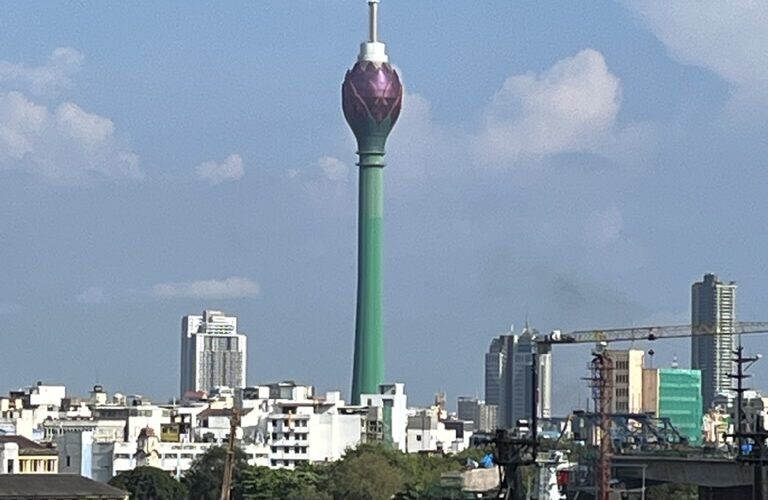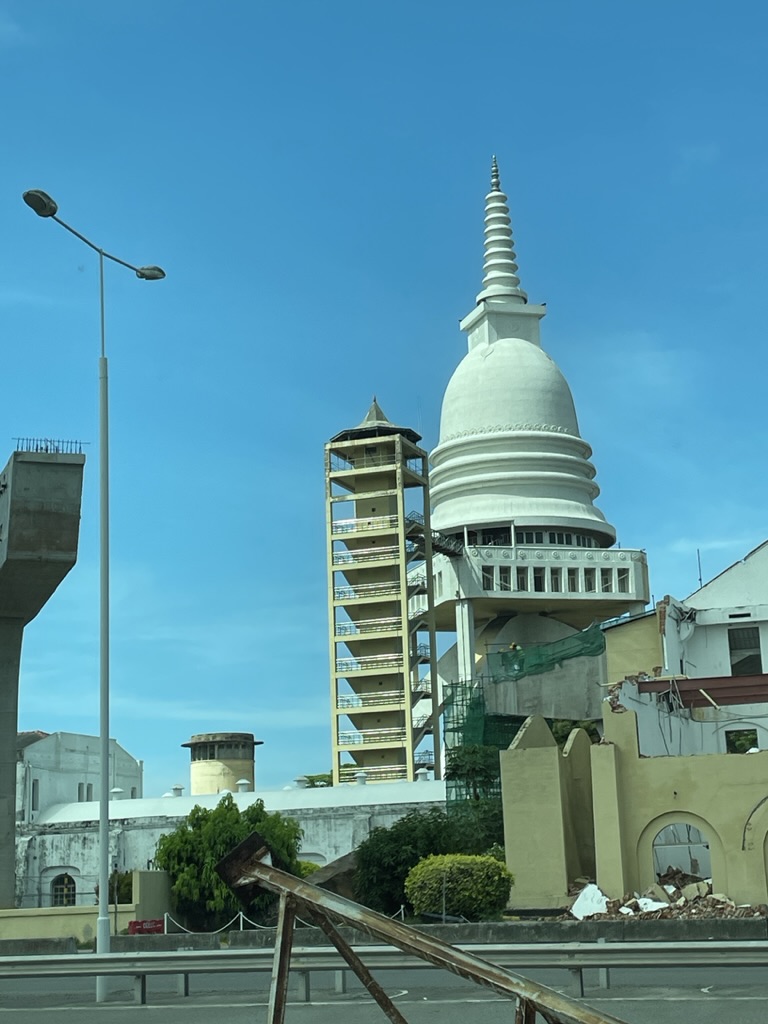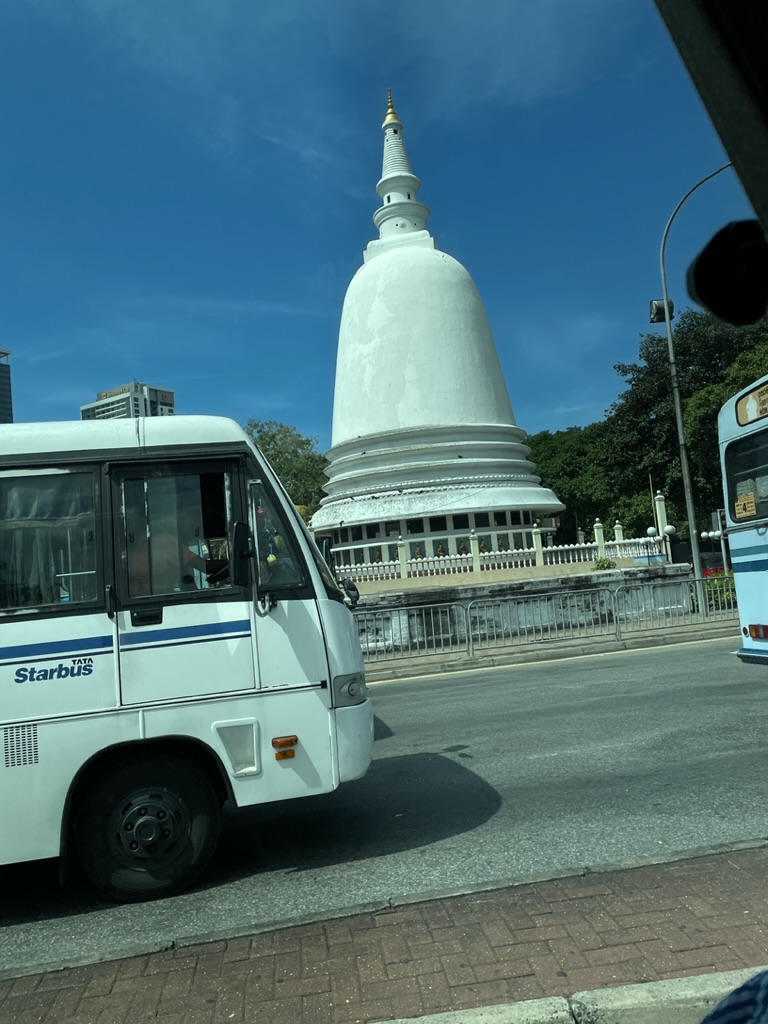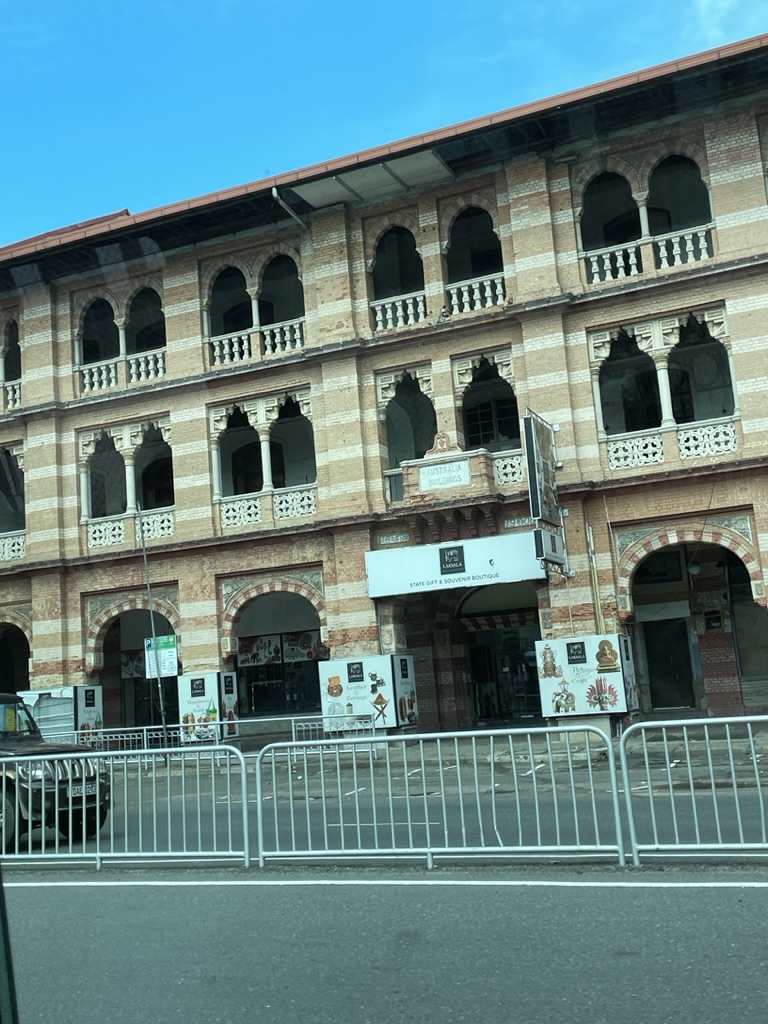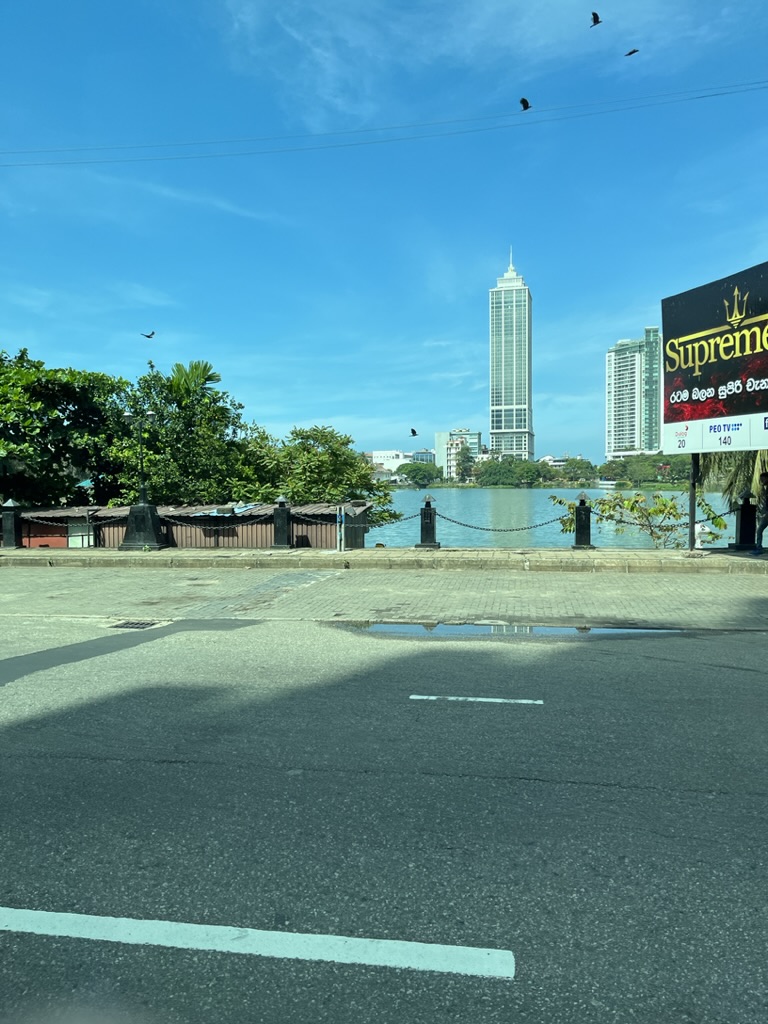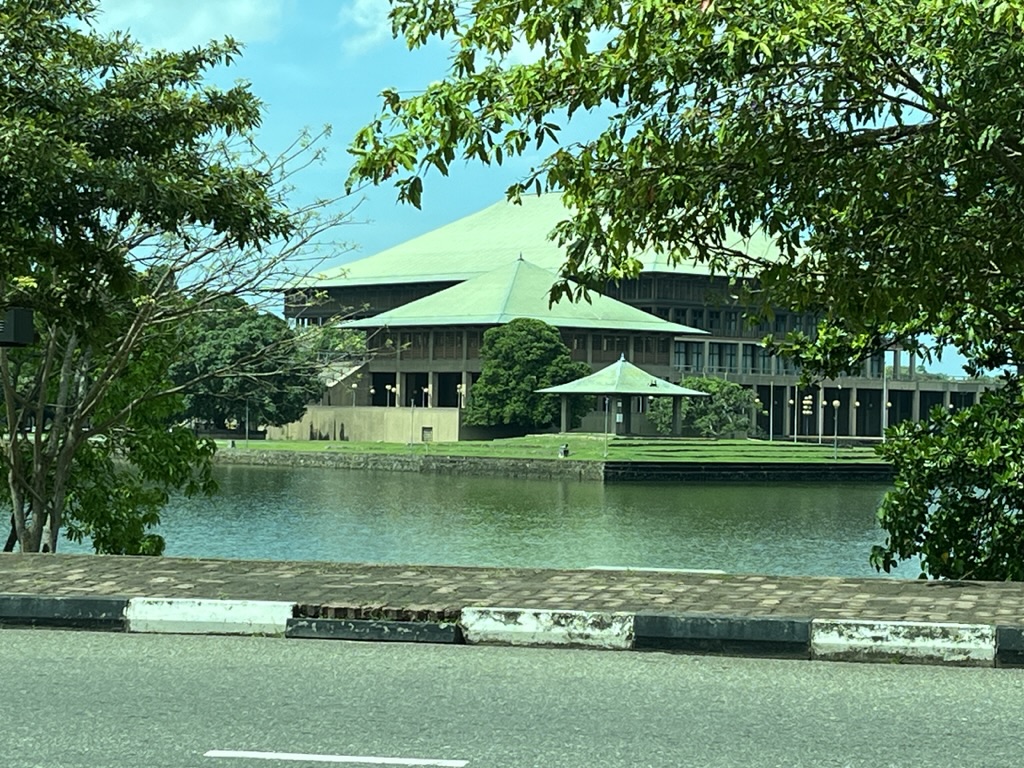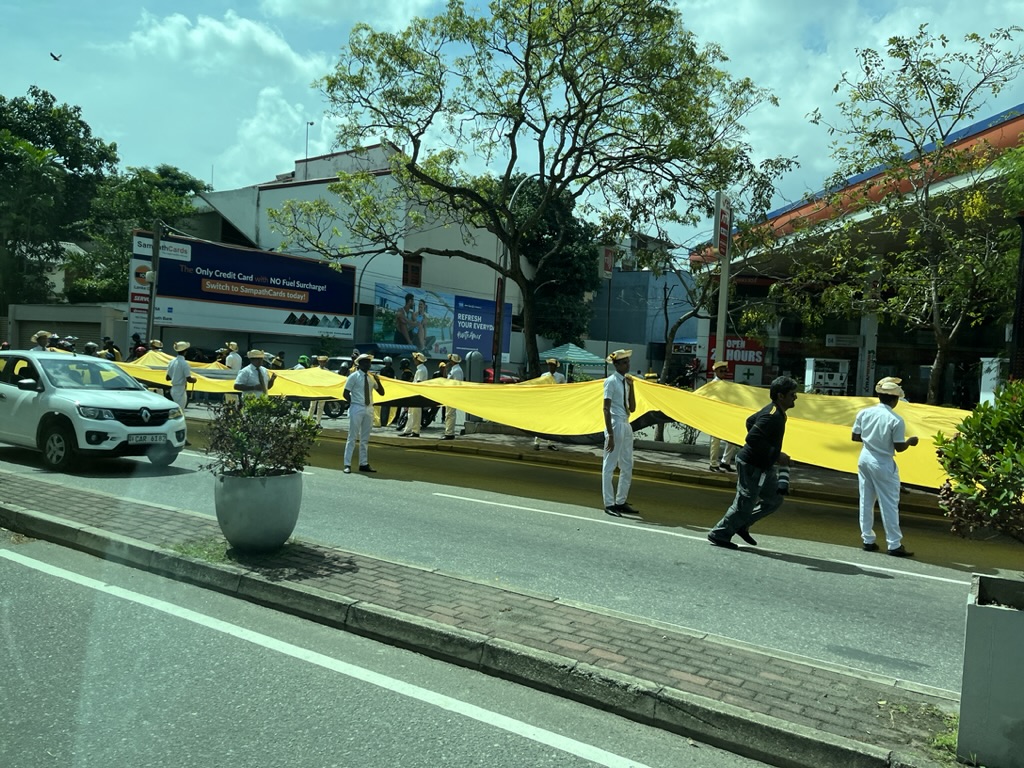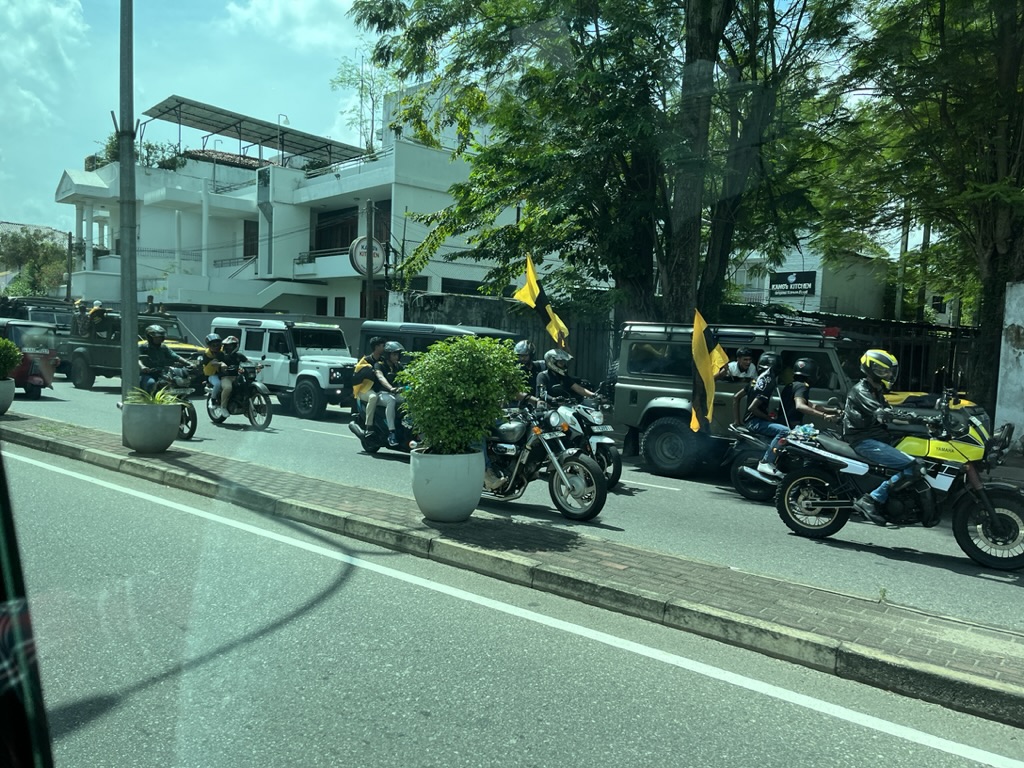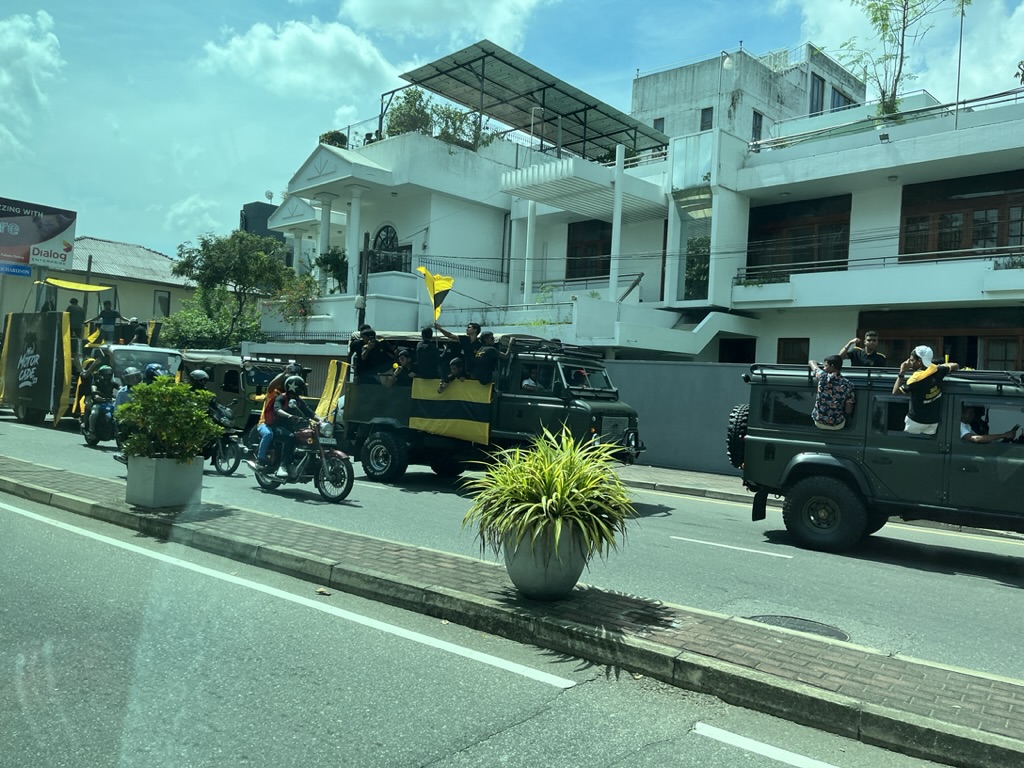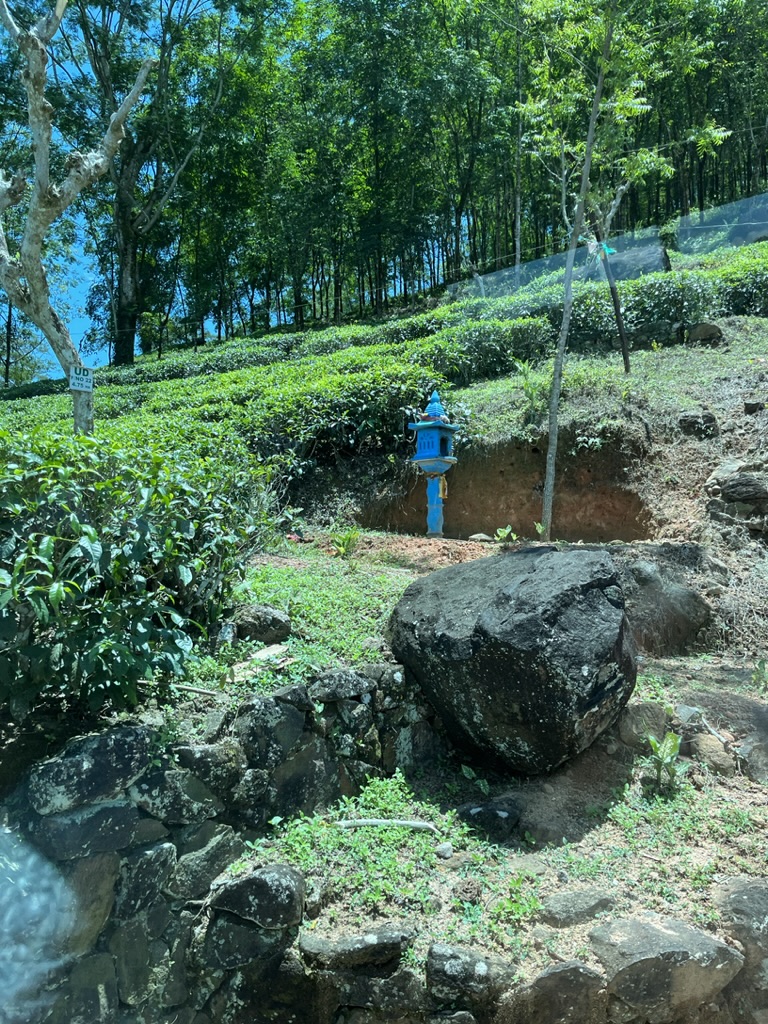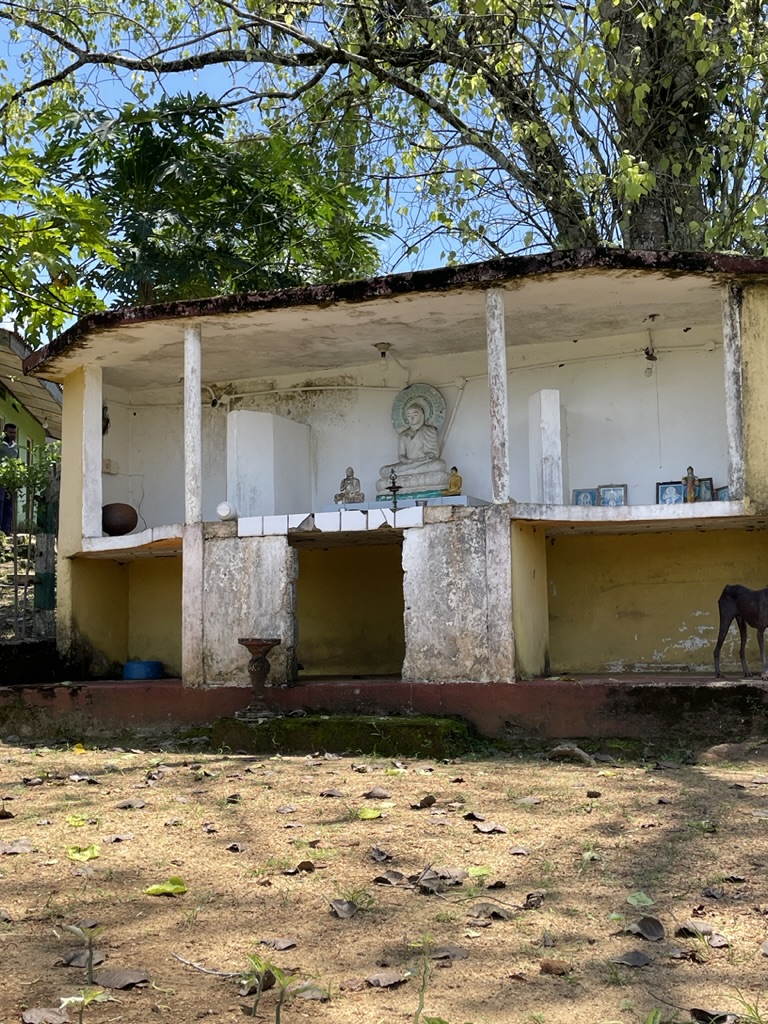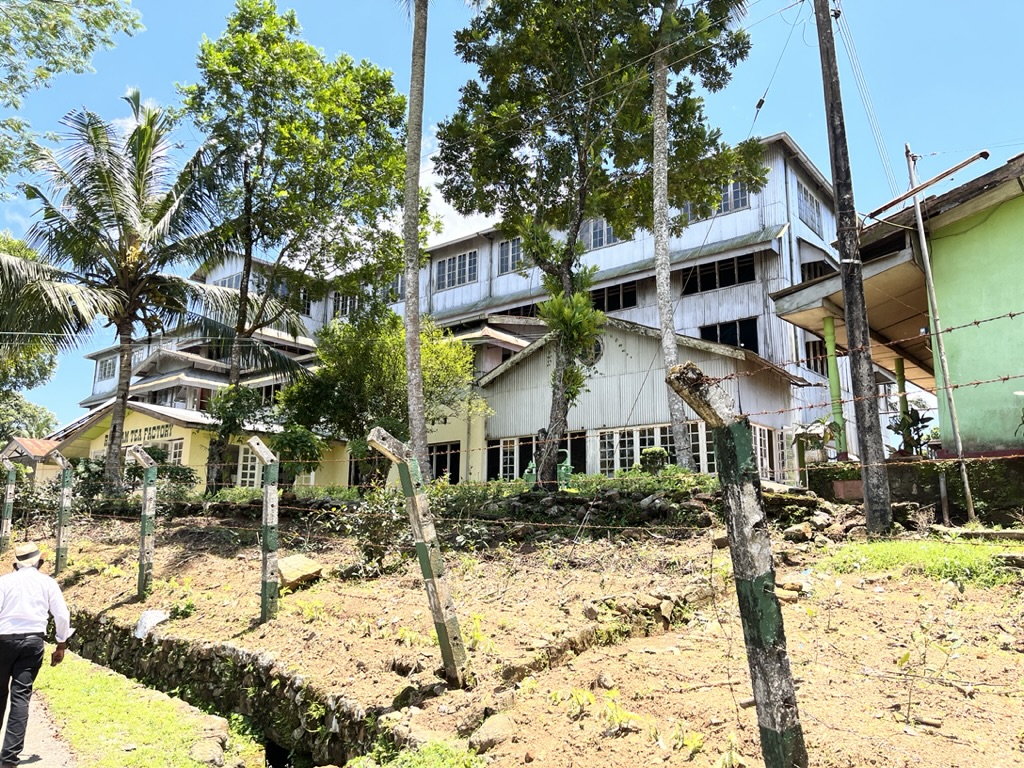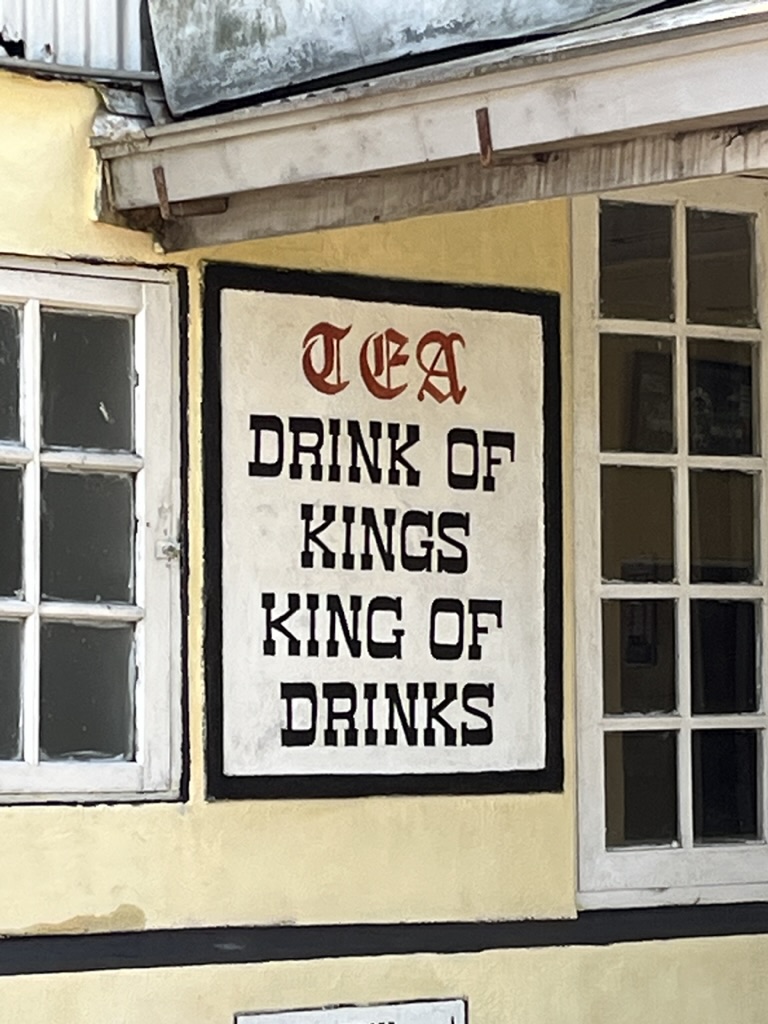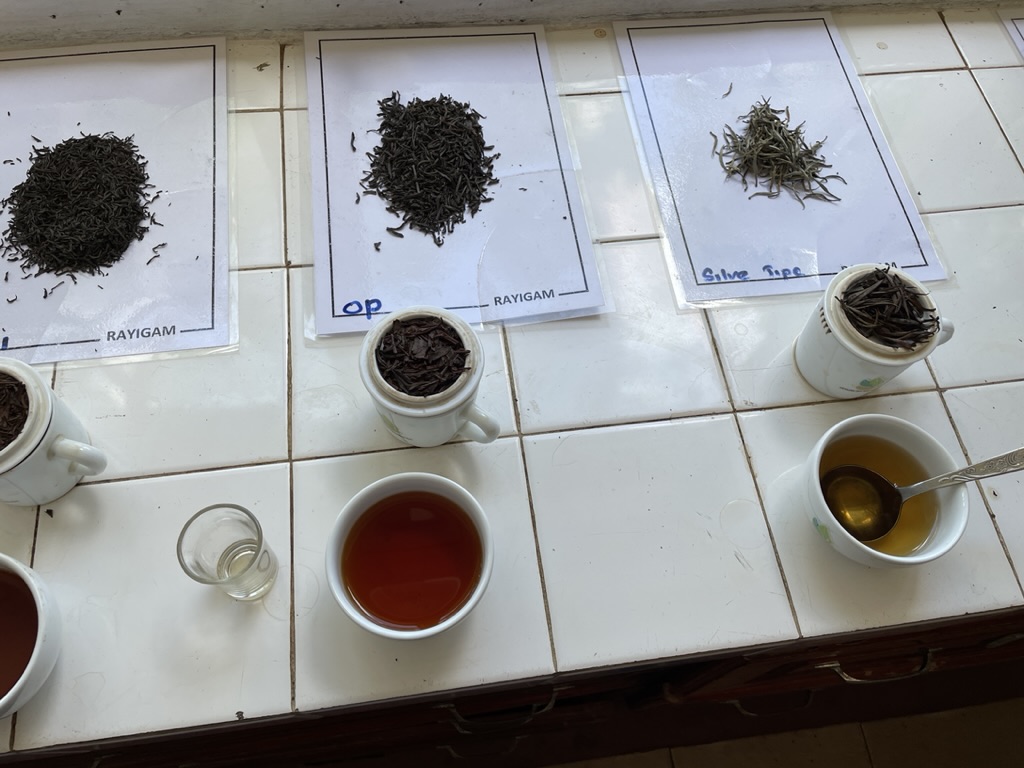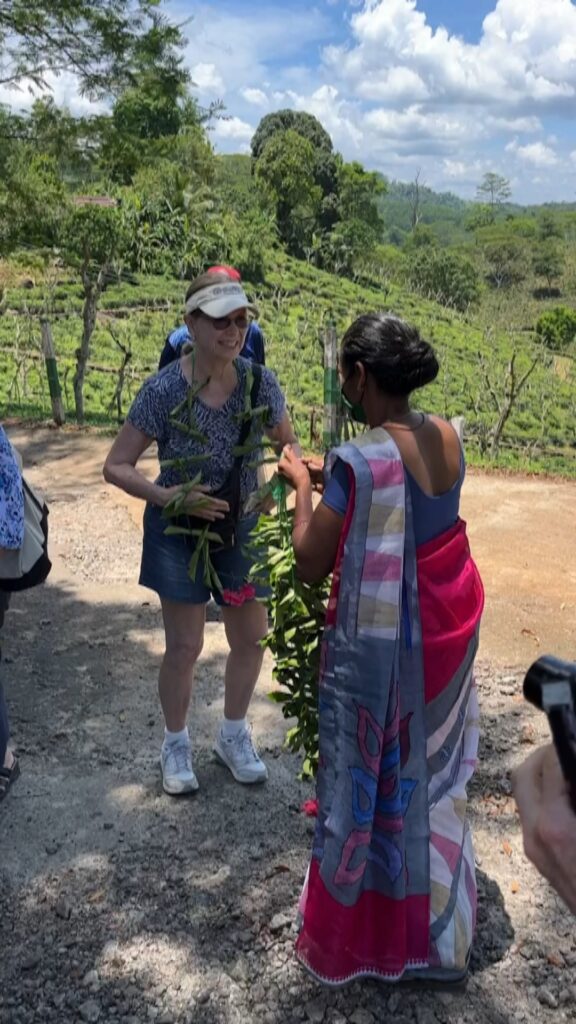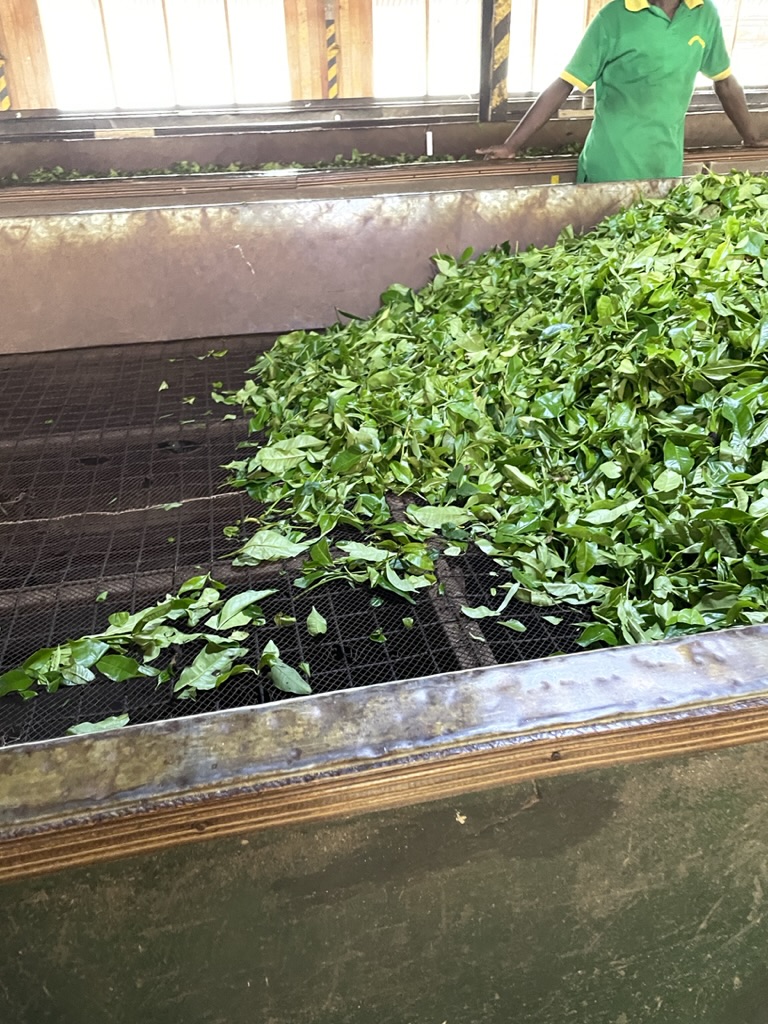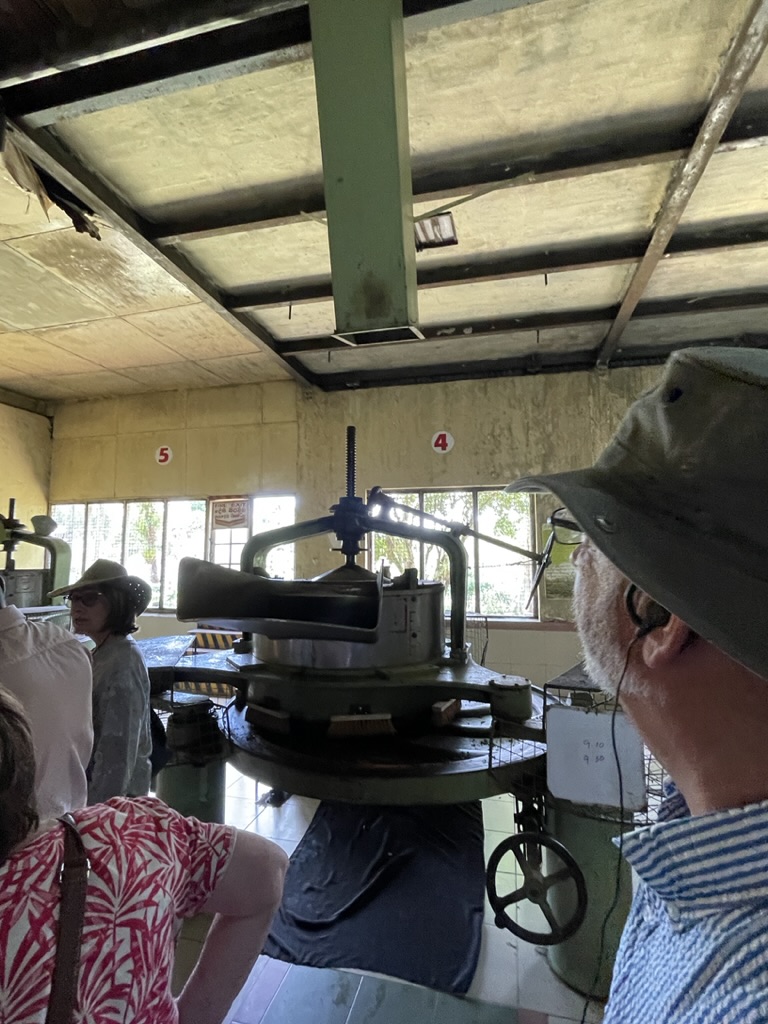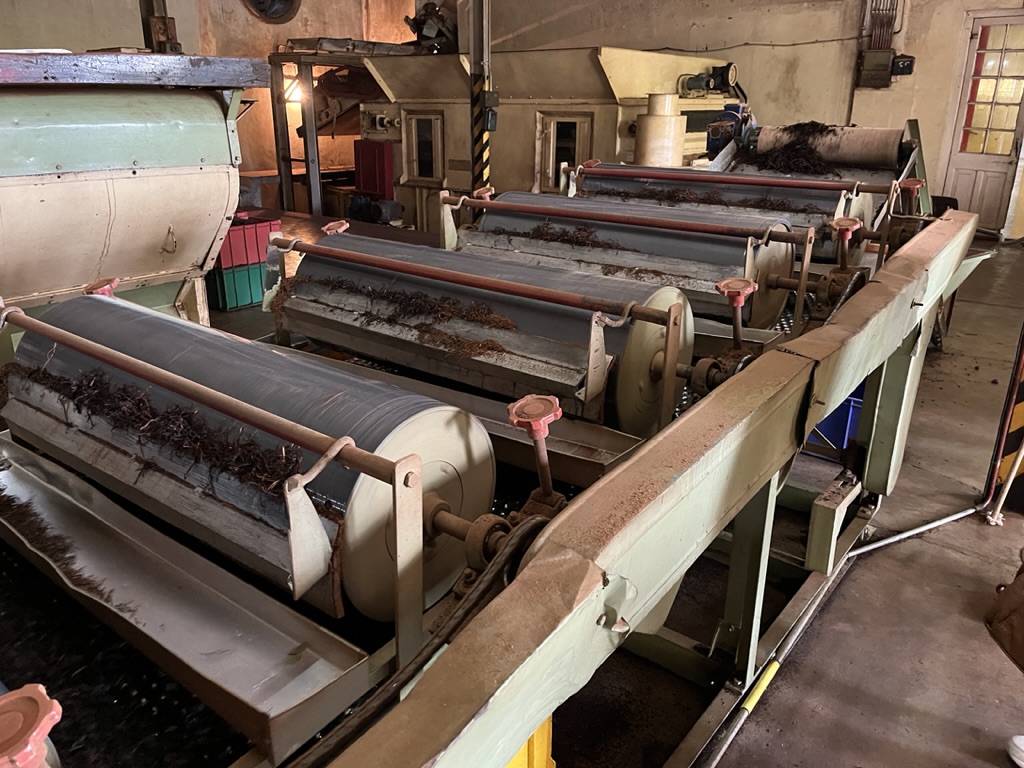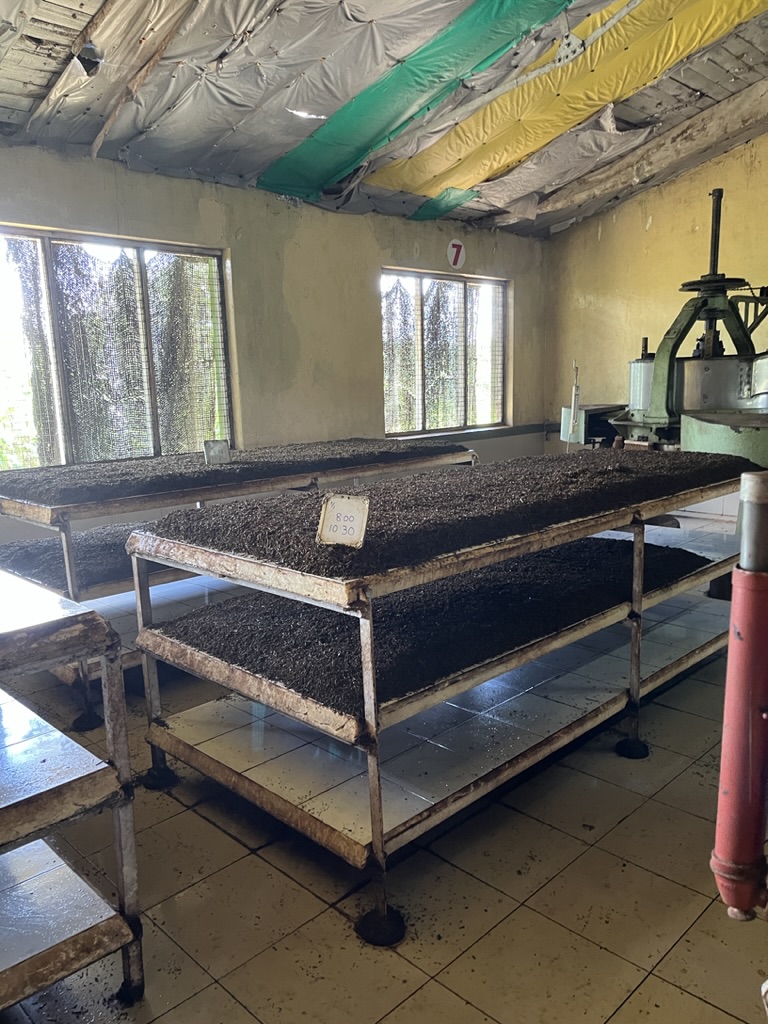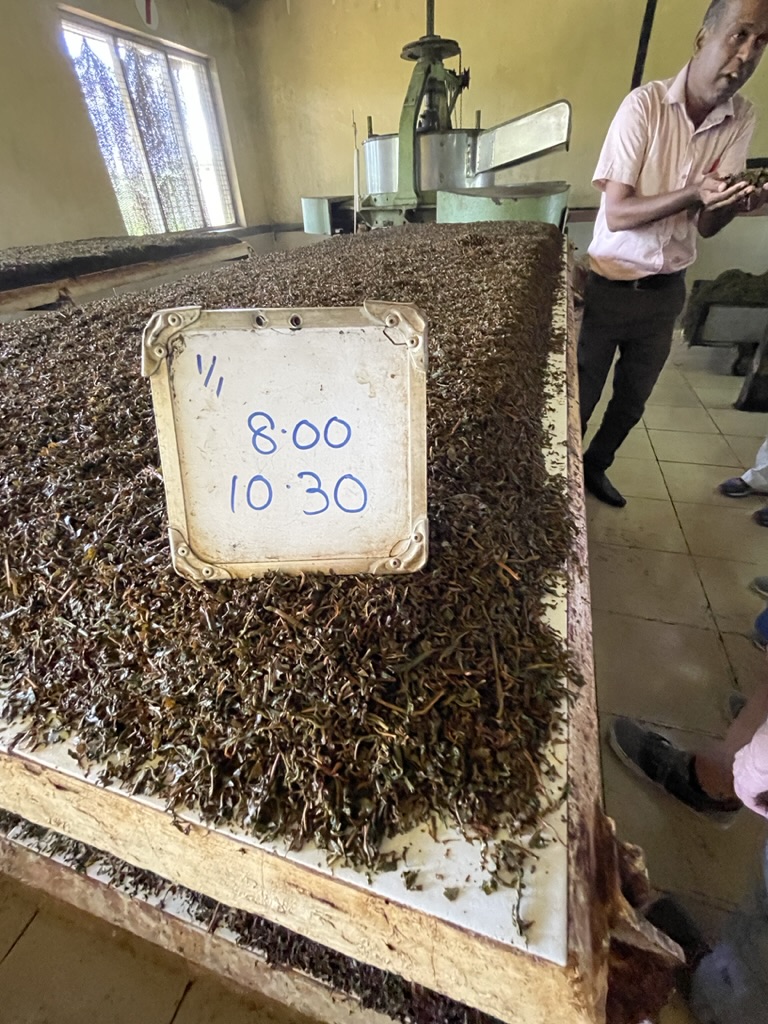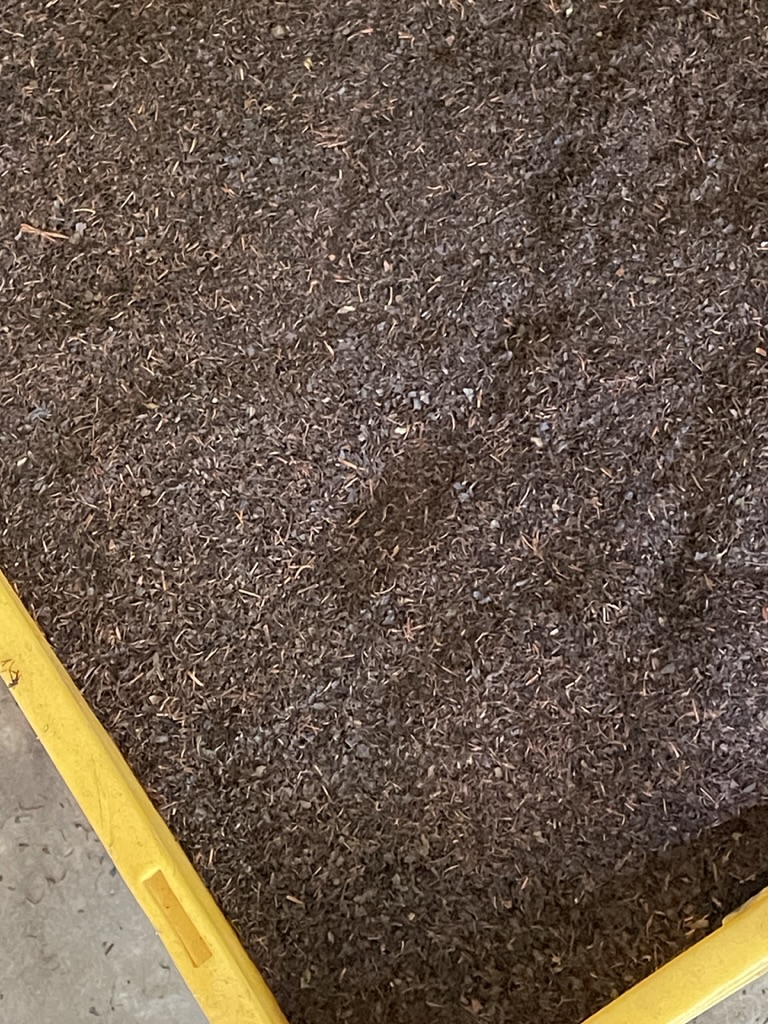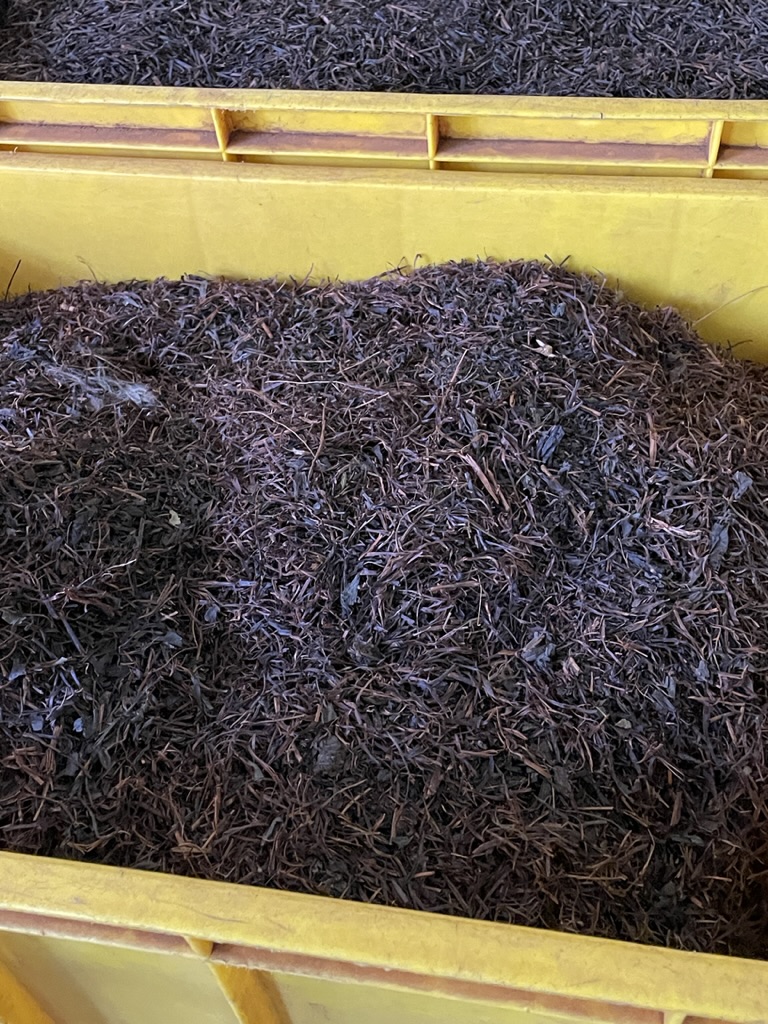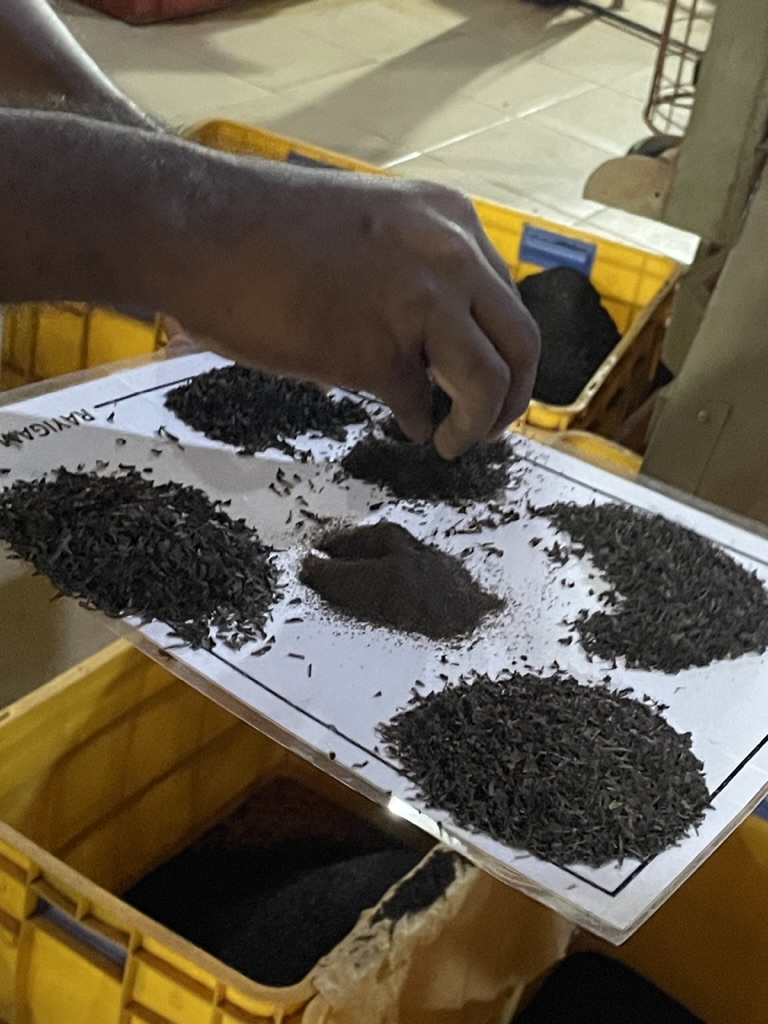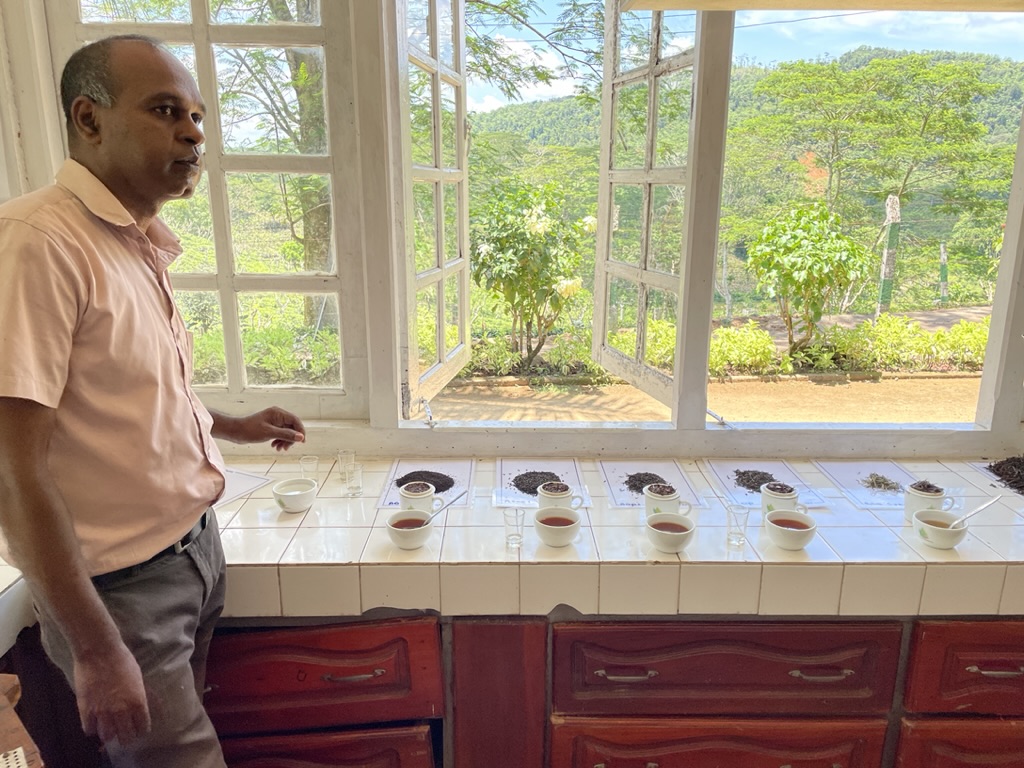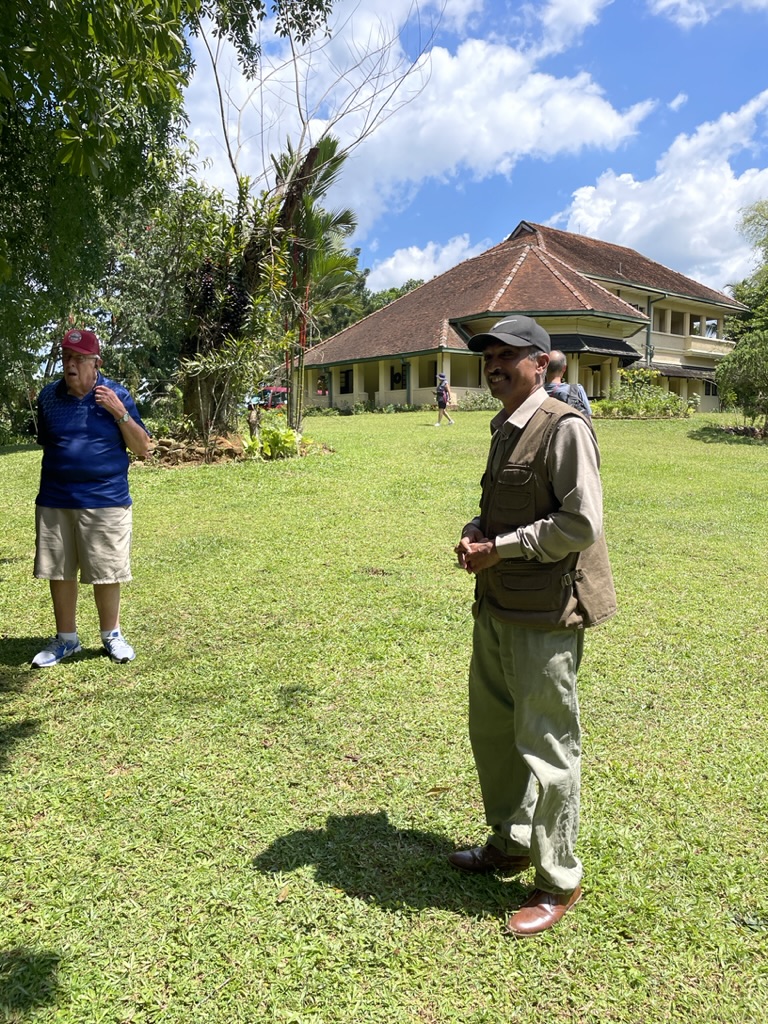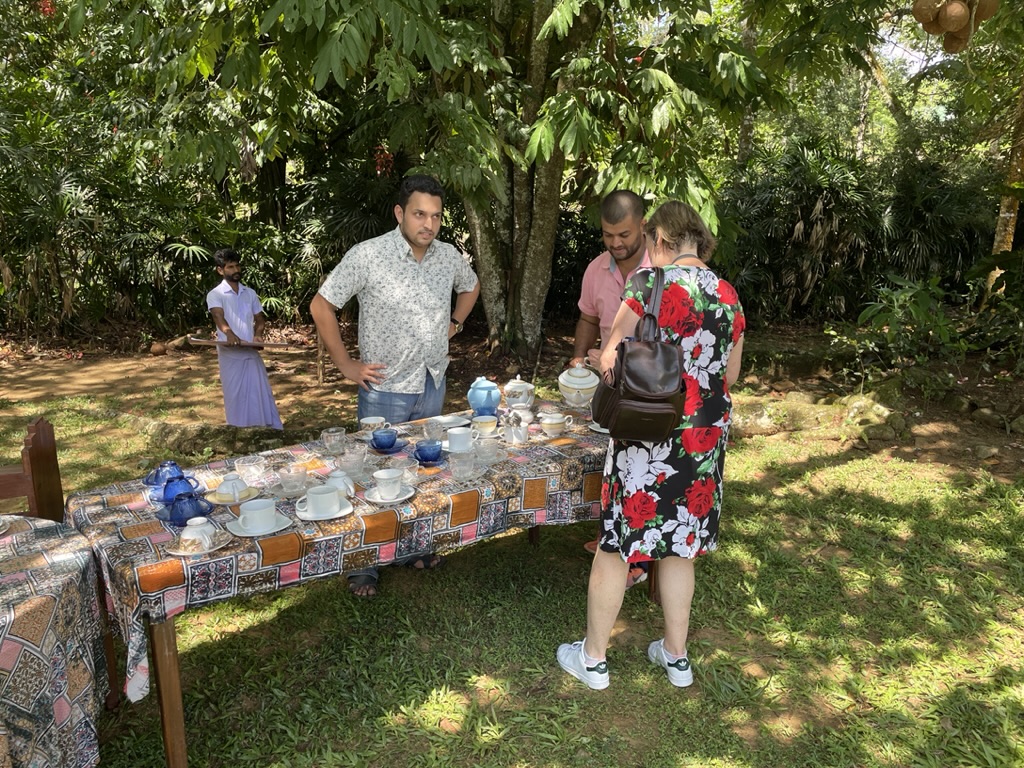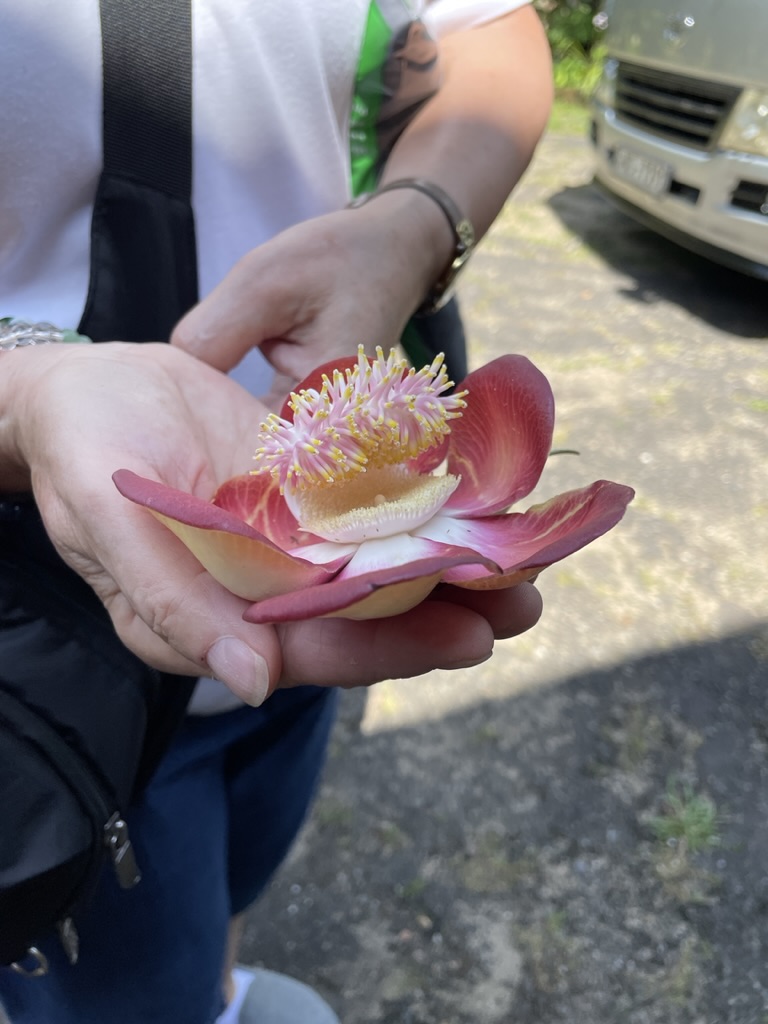Woke up this morning as we were pulling in to port.
After a few quick laps on the deck and a few (woops – too many) post-shower minutes of relaxing it was a frantic race to eat, slather up with sun screen and insect repellant, and get to the Theatre for our 9:45 Excursion Call to a Tea Plantation (Sri Lanka is famous for its tea – one of its major exports).
We made it and shortly thereafter found ourselves (12 of us) on the minibus heading off thru the city to the mountains, seeing a few sights along the way.
A couple of hours later we climbed out of the lowlands and worked our way up a mountain. Eventually we began to see Tea plants.
You may notice that there’s a lot of shade around. The Tea plants do best in a shady environment (also helpful for the people out working in the heat).
There are also flooded rice paddies and plantations of rubber trees.
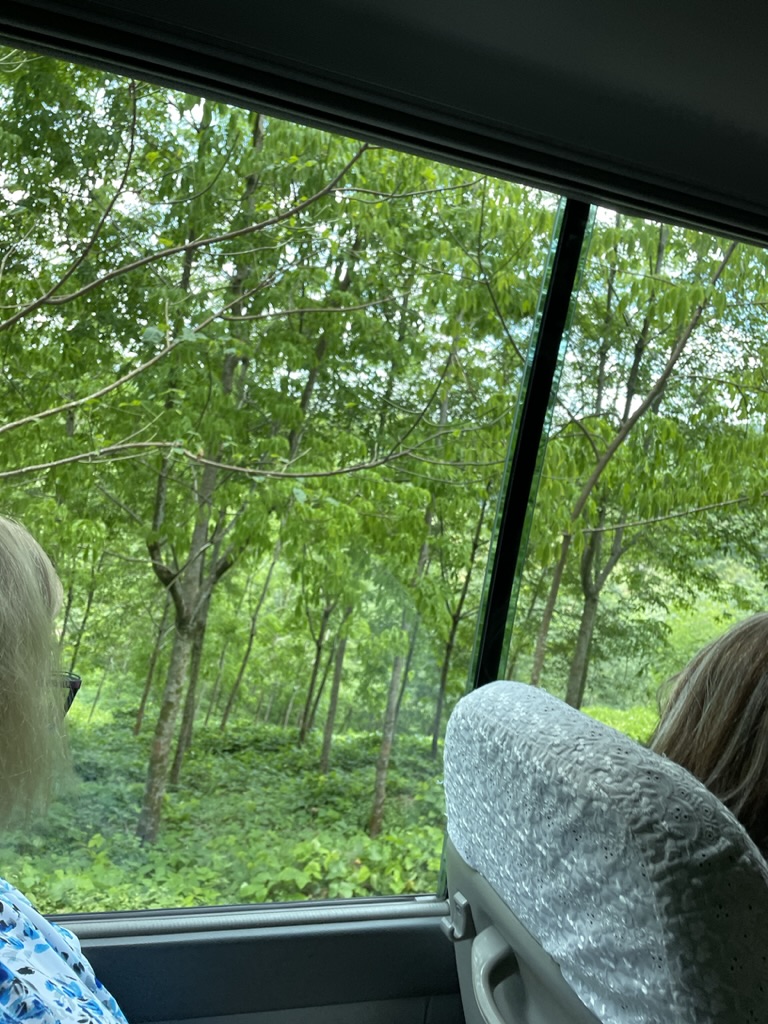
As we got closer to the Tea Factory we were aiming for we stopped to see someone demonstrate harvesting the rubber from a live tree.
Arriving at the plantation we first saw a couple of ladies demonstrating the picking process.
They use a white stick lying flat as a level marker so they only pick the new growth that pokes up above the marker. They reach up over their head to toss the picked leaves into a sack attached to their head that hangs down their back. Then we walked over to the factory…
Following the factory tour we were taken to the “Foreman’s House” for tea and cake (this used to be the British plantation owner’s house).
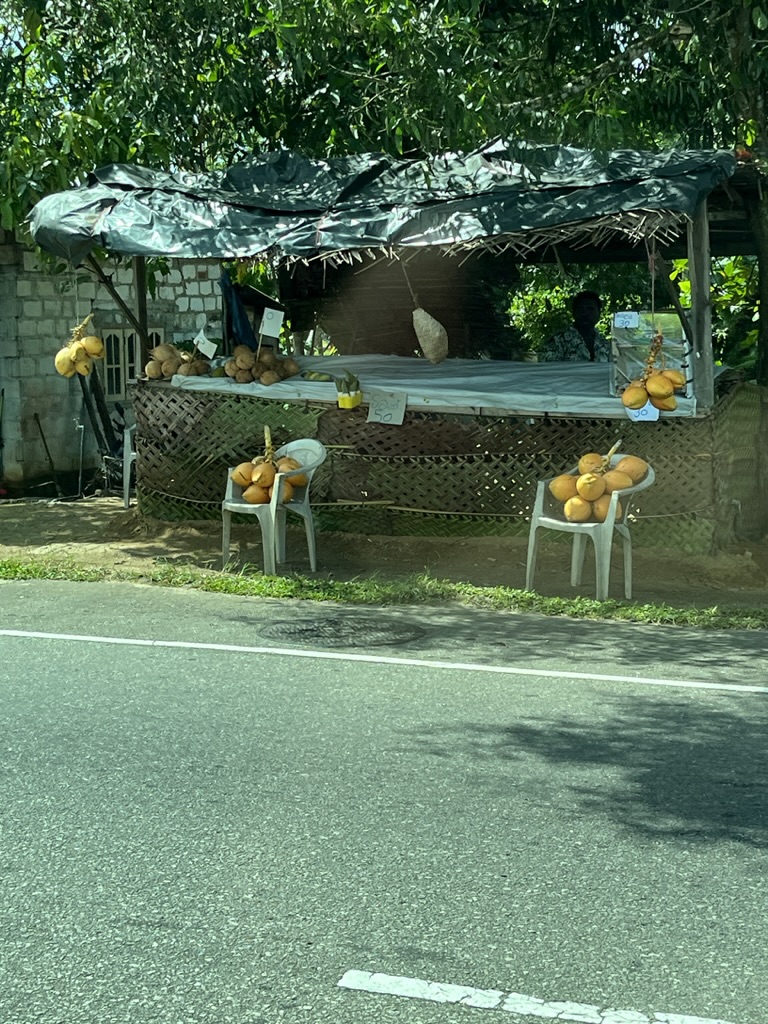
We arrived back at the ship at about 4:00 so we dropped our things in the room and headed up to the Wintergarden in time for “Afternoon Tea”(with crustless sandwiches, various little desserts, and yummy scones) – a fitting way to enjoy a late lunch.
Then it was back to the stateroom to work thru photos, read, nap a bit, and eventually enjoy a late dinner on the Terrace overlooking the night time activities at the port.
Then it was to bed for us.
Nite all, R
Cheryl’s Factoids:
- Stupas were originally used as places containing the ashes of ordinary people but many of them now contain some of Buddha’s ashes or hair or some symbol of his enlightenment and have become holy places. They can also be a memorial marking the location of an event in Buddha’s life and as an offering place to Buddha.
- Colombo is the largest city in the tear-shaped island of Sri Lanka. Sri Lanka has over 3,000 years of written history and is even mentioned in the Hindu Ramayana epic. It supplies 98 percent of the world’s cinnamon. The worst problem here is high inflation and corruption of politicians and high officials. 45 percent of its people are very poor and living on government assistance.
